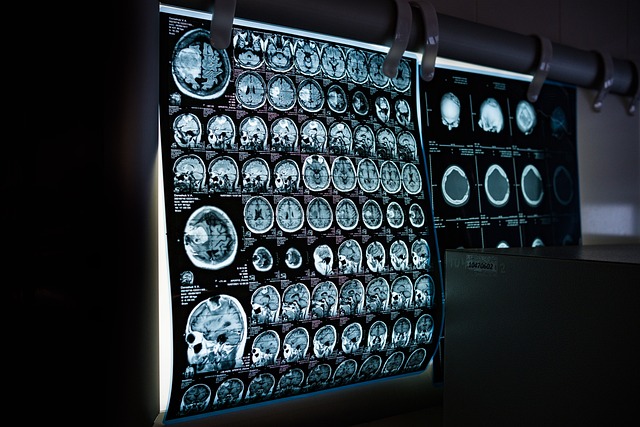Care and management of amyloidosis in the United States
Misfolded proteins can silently damage the heart, kidneys, nerves, and other organs. Understanding the types of amyloidosis, why early diagnosis matters, and the treatments available can help people navigate safe, effective care across the United States.

Amyloidosis is a group of rare conditions in which misfolded proteins form amyloid deposits in organs and tissues, disrupting normal function. While uncommon, it can lead to significant illness affecting the heart, kidneys, nerves, liver, and digestive tract. Effective care focuses on identifying the exact type, protecting organs, and slowing or stopping new deposits. In the United States, multidisciplinary teams often coordinate hematology, cardiology, neurology, and nephrology expertise so patients receive tailored plans that blend disease-modifying therapy with supportive care and monitoring over time.
This article is for informational purposes only and should not be considered medical advice. Please consult a qualified healthcare professional for personalized guidance and treatment.
What causes amyloidosis and how it affects the body?
Amyloidosis arises when certain proteins misfold, aggregate, and deposit as fibrils. The most common subtypes include AL amyloidosis, where plasma cells produce abnormal light chains that deposit in tissues; ATTR amyloidosis, caused by transthyretin protein that can be either variant due to inherited gene changes or wild type associated with aging; and AA amyloidosis, driven by chronically elevated serum amyloid A from inflammatory diseases. Less common forms involve beta 2 microglobulin in long term dialysis and rare hereditary proteins.
Deposits are toxic to tissues and can stiffen or weaken organs. In the heart, they can cause restrictive cardiomyopathy, heart failure symptoms, low blood pressure, and rhythm problems. In the kidneys, they can lead to protein in the urine and reduced kidney function. Nerve involvement may cause numbness, tingling, pain, or autonomic symptoms like dizziness on standing and digestive changes. Some patients develop enlarged liver, gastrointestinal issues, carpal tunnel syndrome, bruising around the eyes, or tongue enlargement depending on the subtype.
Symptoms and early diagnosis importance in amyloidosis
Early signs are often subtle and can resemble more common conditions, which is why delays occur. Red flags include unexplained heart failure with thickened heart walls but low voltage on electrocardiogram, carpal tunnel syndrome in both hands, orthostatic lightheadedness, unintentional weight loss, persistent protein in the urine, leg swelling, numbness or burning in the feet, and gastrointestinal symptoms like early satiety or diarrhea. Macroglossia and periorbital purpura point more toward AL in the right context.
Timely recognition improves outcomes because modern therapies are most effective before advanced organ damage. The diagnostic process usually involves blood and urine testing for abnormal light chains and immunofixation, followed by tissue biopsy of fat pad, bone marrow, or a clinically involved organ, with Congo red staining confirming amyloid. Precise typing of the amyloid protein by mass spectrometry or validated immunohistochemistry is essential. For suspected cardiac ATTR, bone seeking tracer scintigraphy can help distinguish ATTR from AL, and genetic testing identifies hereditary transthyretin variants. Coordinating these steps through specialty centers and local services in your area can streamline care.
Treatment options and care
Management is guided by subtype and organ involvement. In AL amyloidosis, therapy targets the plasma cell clone with combinations that may include bortezomib, cyclophosphamide, dexamethasone, and monoclonal antibodies such as daratumumab. Selected patients may be candidates for autologous stem cell transplant after careful assessment. Close monitoring of light chain levels and organ responses guides adjustments.
In ATTR amyloidosis, treatment aims to stabilize or reduce transthyretin production. Tafamidis is used for cardiomyopathy related to transthyretin. Gene silencing agents, such as small interfering RNA or antisense oligonucleotides, can lower transthyretin production in some forms, especially with nerve involvement. For AA amyloidosis, controlling the underlying inflammatory disease with targeted anti inflammatory therapies is central to preventing new deposits. Dialysis related cases may benefit from optimized dialysis strategies and consideration of transplant when appropriate.
Supportive care is crucial across all types. For heart involvement, diuretics manage congestion, while certain heart medications are used cautiously due to low blood pressure risk. Blood thinners may be considered for atrial fibrillation because of increased clot risk. Neuropathy care includes pain control, physical therapy, and strategies for autonomic symptoms. Kidney care addresses fluid balance, protein loss, and blood pressure. Nutrition, rehabilitation, and infection prevention round out long term support. Many people benefit from plans coordinated at specialized centers with collaboration from local clinicians in their area.
Current research and awareness for rare diseases
Current research and awareness for rare diseases are reshaping the outlook for amyloidosis. Studies are evaluating next generation gene silencers, stabilizers, and agents designed to clear existing deposits. In AL amyloidosis, novel combinations that incorporate monoclonal antibodies have improved response depth in many patients. In ATTR, emerging approaches include therapies that further suppress transthyretin or seek to remove fibrils, along with imaging advances that refine diagnosis and monitoring.
Awareness efforts by patient organizations and professional societies aim to reduce diagnostic delays through clinician education in cardiology, neurology, nephrology, hematology, and primary care. Public information campaigns help people recognize persistent patterns such as unexplained heart failure with thick walls, bilateral carpal tunnel, or neuropathy with autonomic symptoms. In the United States, information about ongoing studies is available through national registries and trial listings, while community based groups work to improve access, equity, and support services for families.
Conclusion
Amyloidosis represents a spectrum of protein misfolding diseases that can affect multiple organs, but outcomes continue to improve with earlier recognition, accurate typing, and tailored treatment. Subtype specific therapies, thoughtful organ support, and coordinated follow up are central to long term management. Continued research and greater awareness are expanding options and helping more people receive timely, effective care.




